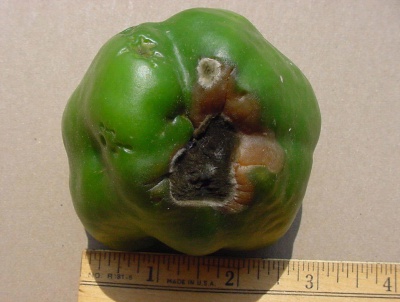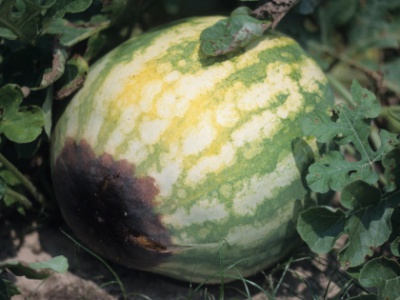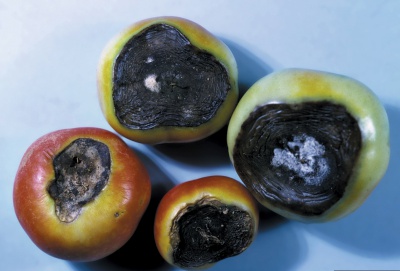Blossom end rot causes and cures in garden vegetables
Blossom end rot happens to more than just tomatoes. Check your peppers, eggplant, summer squashes and melons, too.

Blossom end rot is a physiological problem usually associated with tomatoes. Many gardeners have seen it, but may not know why it happened. Michigan State University Extension horticulture educators and Master Gardener hotlines receive a number of calls as gardeners begin circling their gardens looking for ripe produce.
Tomatoes, being the biggest garden diva, are alarmed and shocked at many situations that other less neurotic vegetables ignore. Tiny doses of herbicide, blowing sand and lack of water will produce damage to tomatoes while other vegetables tough it out. But other plants, if stressed enough, can also experience blossom end rot. These are peppers, eggplant, summer squashes and melons.
If a person reads information they find in books or online, they will draw the conclusion that blossom end rot is caused by a lack of calcium. They then decide they need to infuse the soil with this mineral. Some callers ask if they can add crushed or whole egg shells, human calcium supplements, various calcium-based antacids or watering the plants with milk. None of these unusual fixes will help. The real problem is that there was not enough water in the soil to transport the ample calcium that is already present in virtually all Michigan soils. On rare occasions, blossom end rot can be caused by poor pollination.

Blossom end rot on pepper. Photo by Paul Bachi, University of Kentucky Research and Education Center, Bugwood.org

Blossom end rot on watermelon. Photo by Gerald Holmes, California Polytechnic State University San Luis Obispo, Bugwood.org

Blossom end rot on tomatoes. Photo by David B. Langston, University of Georgia, Bugwood.org.
When looking at any of the fruit plants that can get blossom end rot, the process is the same as far as water and calcium are concerned. Water is taken into the plant through the roots. Leaves on the plant are involved in something called transpiration. As the sun warms the leaves and moisture evaporates off the leaves to cool them, it creates what could best be described as a vacuum. Water evaporates and more water moves in to take its place so leaves remain cooled and do not burn. Leaves are soft and moisture moves easily, but when fruit is involved, the skin of these fruits is tougher than leaves and moisture does not move out of the fruit as easily. When there is not enough water in the soil to supply the leaves and fruit, the water goes into leaves with ease. The fruit does not pull the water as successfully.
Fruit on affected plant ends up with the bottom portion of the fruit not filling out, darkening and appearing shriveled. Often, the bottom portion of tomatoes, squashes and others will begin to decay when weather is humid and disease organisms are present. Not every fruit on a plant will have blossom end rot. Air temperatures, soil moisture and air humidity are always changing.
Plants that do not receive enough water or are not watered consistently can have blossom end rot. Often, gardeners will water one side of the plant or have drip irrigation that only covers a small root area. Or, gardener use an overhead irrigation system that only gets 1-2 inches of the soil damp when there are many inches of roots below those that get nothing. Sandy soils will let water drain through rapidly and that’s why it is desirable to have 5 percent or more organic matter in the soil. These little organic “sponges” absorb and hold moisture and nutrients longer for plant roots to capture.
Plants grown in containers where roots are crowded and there is not enough soil to hold water can be affected. This can also happen in small planter boxes or if too many plants are grown in too small of an area.
The solution to blossom end rot requires only three tools. A rain gauge is needed near the garden to keep track of rainfall. You want 1 inch of water a week or slightly more. A hose and water are needed to get water to the plants, and it is necessary to monitor the soil moisture by sticking your finger into the soil. If you can get your finger into the soil 2-3 inches deep and the soil is dry, water needs to be added. Be aware that damp soil and cool soil are different. Soil should feel like a squeezed-out sponge or washcloth. Remember, only you can prevent blossom end rot and watering when it is needed is the cure.
If you want to get a soil test for nutrients, soil type and pH for your garden and a recommendation, you can order one online for $25 at MSUSoilTest.com.



 Print
Print Email
Email


